Flowers are a great addition to any indoor space as they immediately add to the vibe of any space. They not only bring beauty but also have lots of benefits.
If you are an aroma freak, then many flowers offer a fragrant smell. If you are confused about which flower to add or plant, we have your back.
We have listed popular, easy-growing flowers you can choose from. Simply check your conditions, match with the flowers you choose, and plant or buy them.
So, here is a list of 15 flowers and their basic care guide that you can grow indoors.
Peace lily
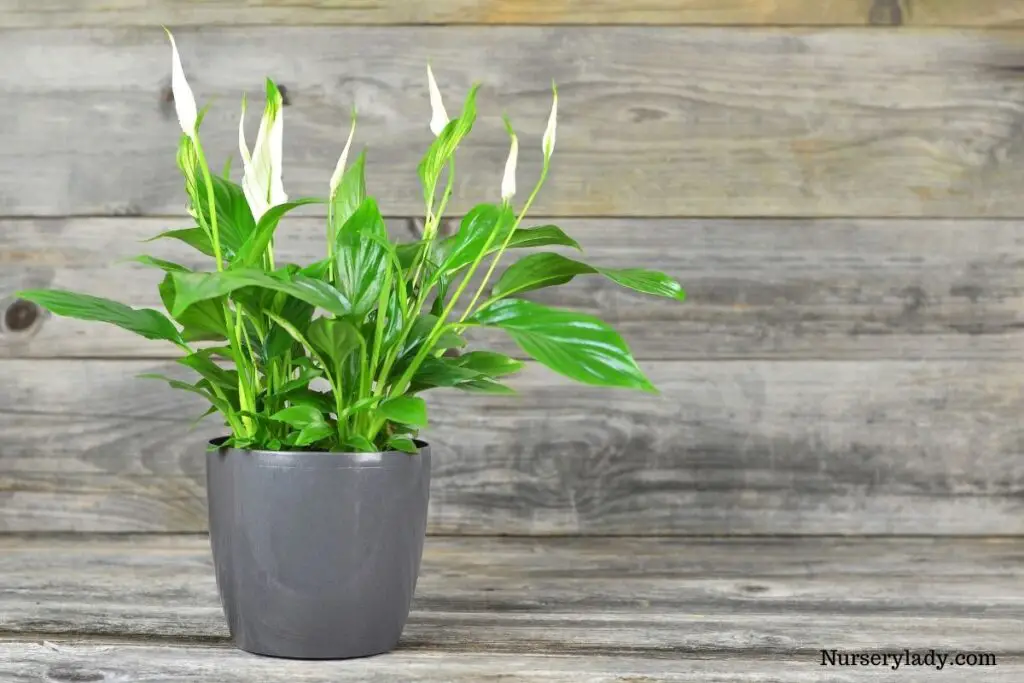
The peace lily is a striking plant with its long-lasting flower stalks. With white flowers and glossy foliage, they will brighten your space.
They are a great choice for indoor planting and are natural air-purifiers. They are hardy and low maintenance.
Light: Peace lily can grow well in the shade. Indoors provide them with bright indirect light but not direct. Their leaves turn pale when kept in indirect light for a long period.
Watering: Peace lily will rather stay underwatered than stay over-watered. Water them with an inch of watering when the soil is dry. Use filter water if the water is highly chlorinated.
Fertilizer: Peace lily can be fed with a balanced fertilizer in the summer or slow-release fertilizer at the beginning of the season. Hold feeding during the winters as it will only damage the plant.
General care: Peace lily likes warm temperatures along with high humidity. They may die in temperature levels below 55°F. Protect them from cold drafts and frost. Misting is good during the summer growing period.
Kalanchoe
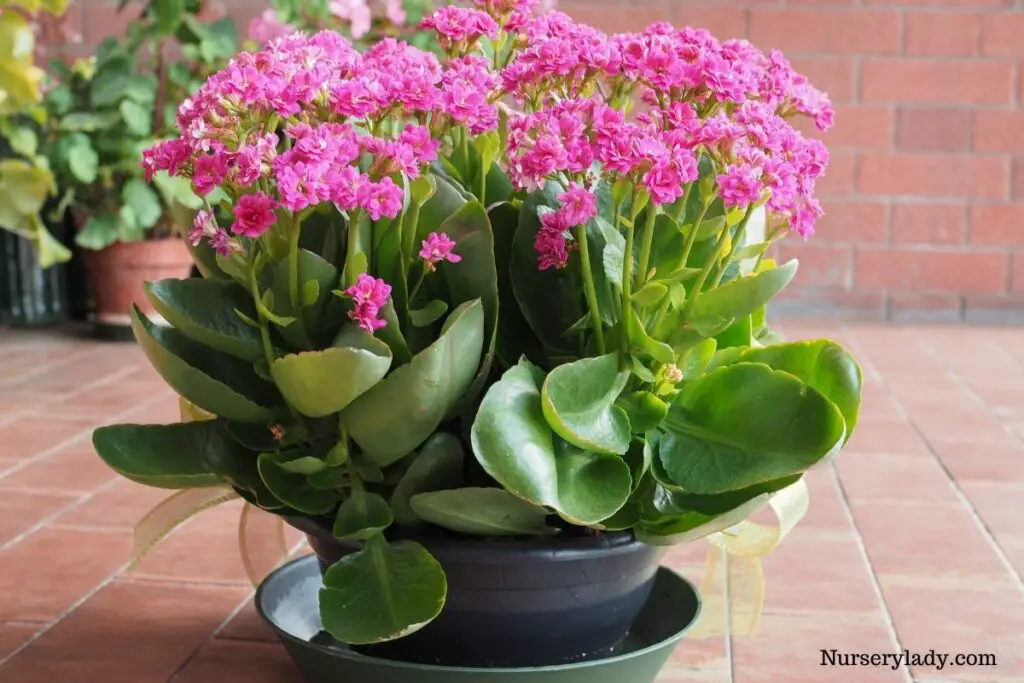
Kalanchoe produces flowers in various colors like red, pink, yellow, and white. They are succulents and need plenty of light to survive, making them perfect for indoor space.
They need little maintenance, and you will enjoy their beautiful flowers throughout the years.
Light: Kalanchoe needs good lighting to grow and bloom best. Find a spot where they can receive abundant light on most days. Direct light is not recommended as it will reduce flowering and burn leaves.
Watering: Kalanchoe does well with minimal watering. They need water only when the soil is completely dry, and the frequency reduces in winter. They store water, due to which they are extremely drought tolerant.
Fertilizer: Kalanchoe will be happier with light feeding in the spring. Feed them with well-balanced fertilizer throughout the spring and summer. For better flowering, feed with a fertilizer high in phosphorus.
General care: Kalanchoe thrives in temperatures between 55°F to 80°F. The only attention they need is during frost to protect them in such conditions. They can grow in all humidity levels.
Geraniums
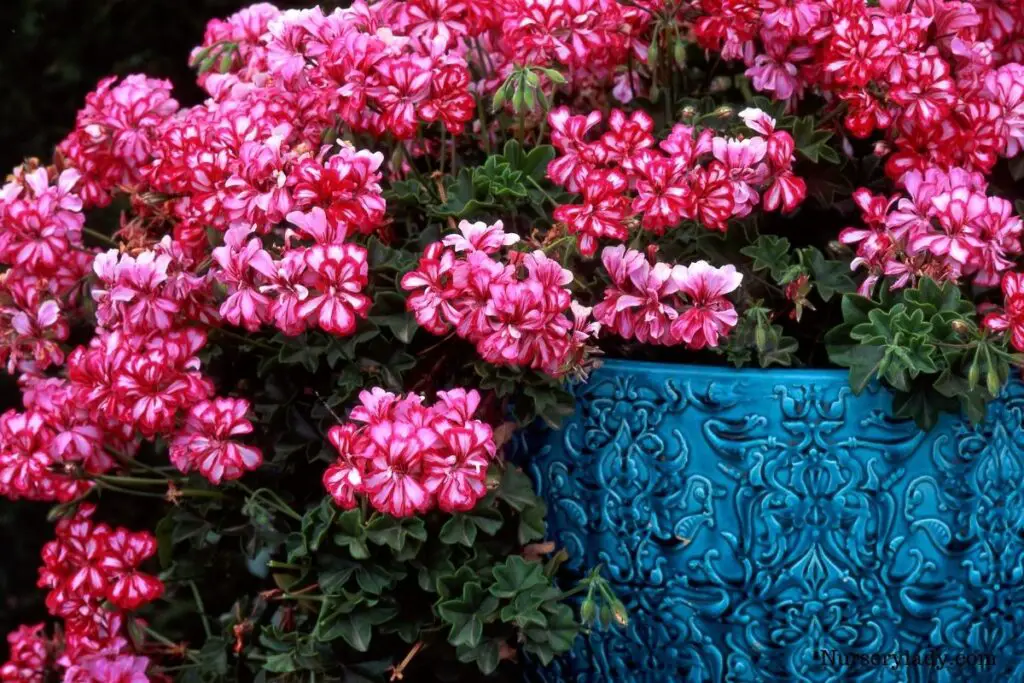
Geranium brings in a variety of colors and scented leaves that are easy to care for. They are also perfect for container planting, indoor planting.
They can bloom all year round if you reset the bloom cycle by keeping them in winter darkness.
Light: Geraniums thrive in full sun to partial shade. Indoors you can keep them in a sunny spot with direct sun rays for the best blooms. Some shade is advisable if the sun is too strong.
Watering: Water geraniums when the soil is completely dry to encourage blooming. They are drought-tolerant, and if they are dropping leaves or declining, that indicates a prolonged period of drought.
Fertilizer: Geraniums grown in containers will benefit from light feeding. Feed with well-balanced fertilizer monthly in the growing season will promote growth and blooming.
General care: Geraniums like warm temperatures i.e. from 55°F to 80°F. Feering temperatures and prolonged low temperatures can kill them. Deadheading the flower stalks after flowering also promotes more flowering.
African violets
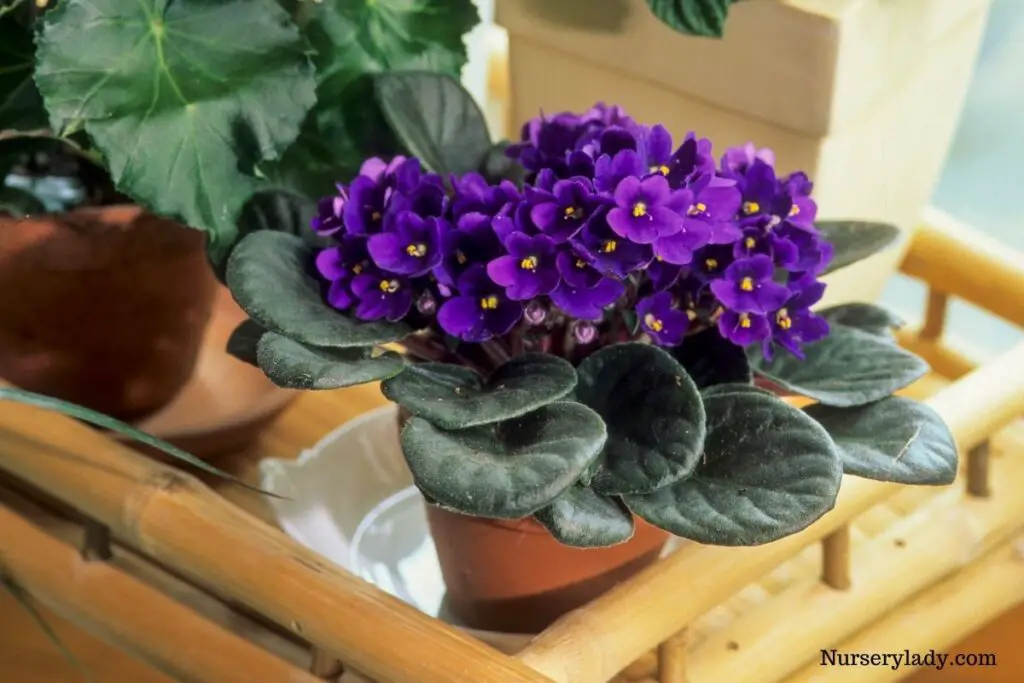
African violets are popular flowering plants with beautiful violet flowers.
They need some care, but by following simple rules, you can keep them flowering the entire year. They can be grown as indoor plants but with some care needs in check.
Light: African violet likes bright indirect light, and they do not appreciate direct light as it can scorch its leaves. Indoors keep them in brightly lit locations with little to no direct sun.
Watering: Water African violet with warm water on a regular frequency. They like evenly moist soil. Water them from below and not from the leaves, as it can lead to fungal problems.
Fertilizer: African violet appreciated little feeding. Feed them with African violet fertilizer monthly in the growing season to encourage more profuse blooming.
General care: African violets like temperature levels above 60°F, and they like humid conditions. To encourage better growth, remove dead leaves and flowers. Also, keep them in good air circulation.
Looking for gardening supplies? We have tested 100's of products before recommending them to you guys. Check out our best pick below:
| Image | Gardening Supplies | Best Price? |
|---|---|---|
 Top
Top Top
Top | Raised Garden Bed Kit | Check On Amazon |
 | XLUX Soil Moisture Meter, Plant Water Monitor, Soil Hygrometer Sensor for Gardening, Farming, Indoor and Outdoor Plants, No Batteries Required | No Results |
 Top
Top Top
Top | 82 Pcs Garden Tools Set and Extra Succulent Tools Set | Check On Amazon |
 | Joeys Garden Expandable Garden Hose with 8 Function Hose Nozzle, Lightweight Anti-Kink Flexible Garden Hoses, Extra Strength Fabric with Double Latex Core, (50 FT, Black) | No Results |
 Top
Top Top
Top | Dual Chamber Compost Tumbler | Check On Amazon |
 Top
Top Top
Top | Sunnyglade Plant Stakes | Check On Amazon |
 Top
Top Top
Top | Organic Cold Pressed Neem Seed Oil | Check On Amazon |
 Top
Top Top
Top | Mighty Mint Gallon :-Insect and Pest Control Peppermint Oil | Check On Amazon |
 Top
Top Top
Top | Scotts DiseaseEx Lawn Fungicide | Check On Amazon |
 Top
Top Top
Top | Jacks Classic 20-20-20 All Purpose Fertilizer | Check On Amazon |
 Top
Top Top
Top | 30,000 Seeds Pollinator Attracting Wildflower Mixture | Check On Amazon |
 Top
Top Top
Top | Survival Vegetable Seeds Garden Kit-Over 16,000 Seeds | Check On Amazon |
Anthurium
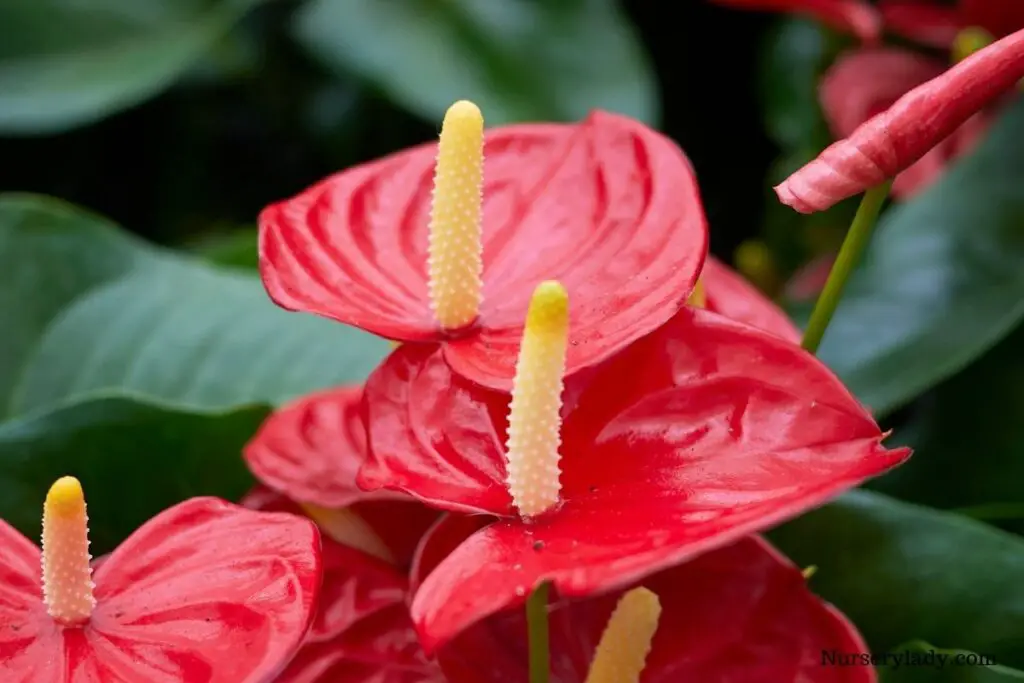
Anthurium has colorful flowers and large leaves. They are the world’s longest flowering plants, making them even more popular among enthusiasts.
They have a moderate growth rate and have particular care requirements to develop properly. They are popular among indoor planting due to their needs.
Light: Anthurium will grow best in bright indirect light. Direct sun will scorch their leaves. Provide them shade if they are receiving too much direct light.
Watering: Anthurium likes evenly moist soil. Allow them to dry between waterings but not completely dry. Ensure proper drainage and check the topsoil before watering.
Fertilizer: Anthurium can be fed with liquid fertilizer monthly during the growing period. Fertilizer high in phosphorus is also great for them to encourage blooming. Always dilute the fertilizer to half to avoid any damage.
General care: Anthurium thrives in high humidity and temperature levels between 60°F to 85°F. They will die in temperatures below 40°F. Mist or use a humidifier during dry months to raise humidity.
Orchid
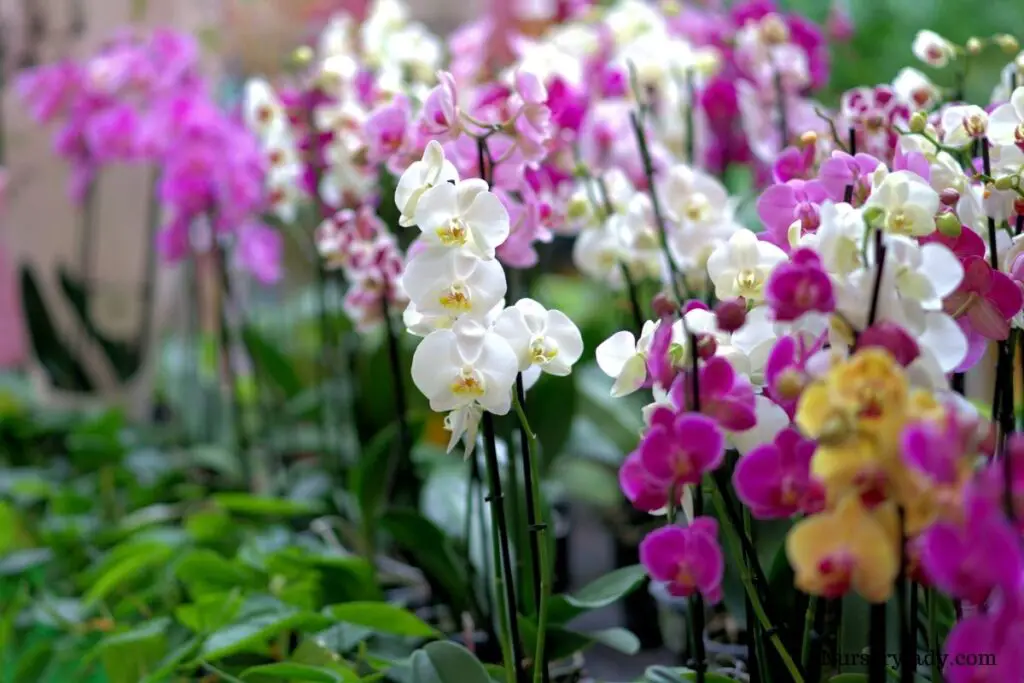
Orchids are stunning plants with spikes and waxy blooms in multiple colors. They grow rapidly and have particular care needs.
They make great additions to your indoor space. They are naturally epiphytes which means they grow on other objects.
Light: Orchids should be kept in a sunny spot. They can easily grow in strong sun, but the intense direct sun can be damaging. Low light will inhibit their growth and blooms.
Watering: Orchids can thrive in little watering, i.e. watering after long dry periods is accurate. Their roots soak water, so they can thrive in dry periods. Simply water them heavily and let them dry out before the next watering.
Fertilizer: Feed orchids with liquid fertilizer in the growing season. You can also add seaweed solution while misting. Avoid feeding in the cold months.
General care: Orchids perform best in temperatures between 50°F and 85°F. They need high humidity and proper ventilation. Do not expose them to cold draft or heating systems.
Christmas cactus
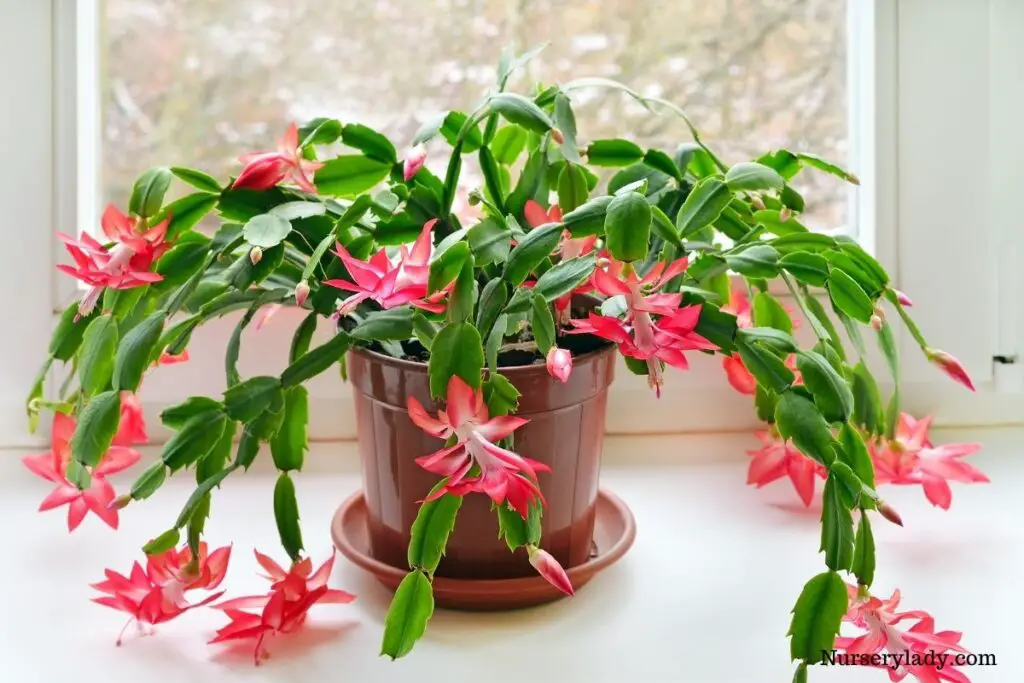
Christmas cacti are stunning holiday plants that will steal the spotlight with tubular blooms.
They have interesting items and have flowers at the end of them. They are an amazing choice for indoor planting and easy to maintain.
Light: Christmas cactus prefers partial shade or dappled light. They can also grow in other lighting conditions, but the direct sun can be damaging. Direct light in winters is acceptable.
Watering: Christmas cactus likes frequent watering and proper drainage. Water them thoroughly and let them dry completely before the next watering. You can check the soil moisture by digging a finger in the soil from the top, water thoroughly if it feels dry.
Fertilizer: Feed Christmas cactus with a balanced liquid fertilizer every month in the growing period. Stop feeding them once the flower buds start forming, and start again after the plant blooms.
General care: Christmas cactus thrives in temperature between 70°F and 80°F. They prefer ample humidity; you can mist to maintain that. Save them from cold and hot drafts.
Orange jasmine
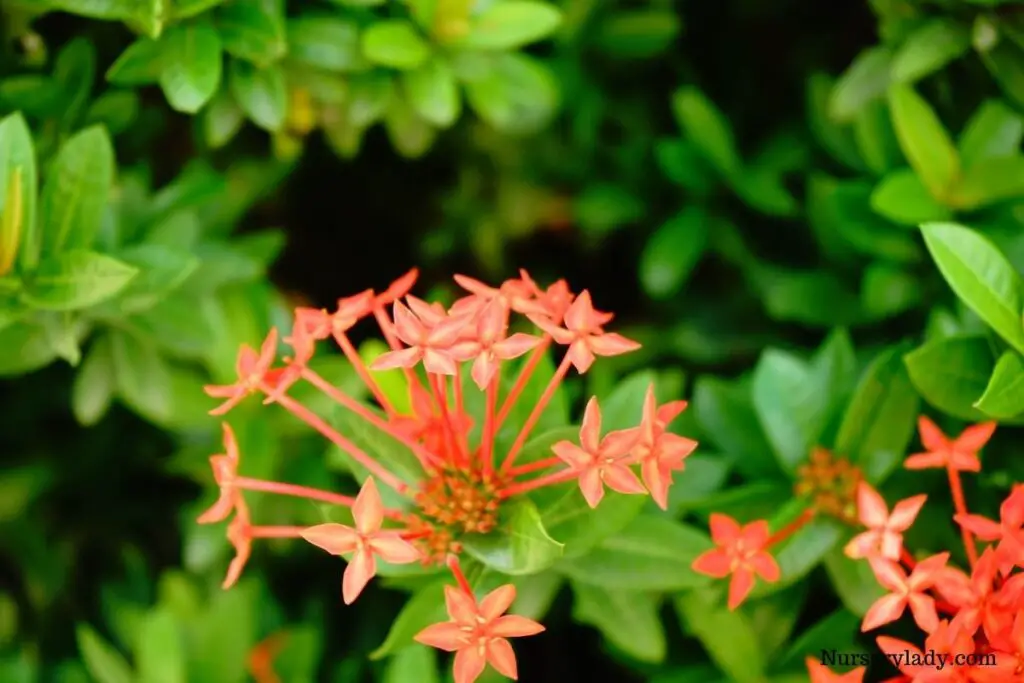
Orange jasmine is a popular plant with a sweet fragrance blooming all year round.
They add beauty and fragrance to your indoor area. Give them proper care and see them flourish.
Light: Orange jasmine grows best in full sun. Keep them near a sunny windowsill with 6-8 hours of light each day. They can grow in some shade but will flower best in full sun.
Watering: Water orange jasmine regularly to keep it evenly moist. They can withstand some missed watering sessions but will not grow that well in such conditions.
Fertilizer: Feed orange jasmine with a fertilizer designed for evergreen shrubs. Feed them from the start of spring through fall.
General care: Orange jasmine grows best in high temperatures with average to high humidity. They struggle in frost; protecting them in such conditions is essential to save the plant.
Amaryllis
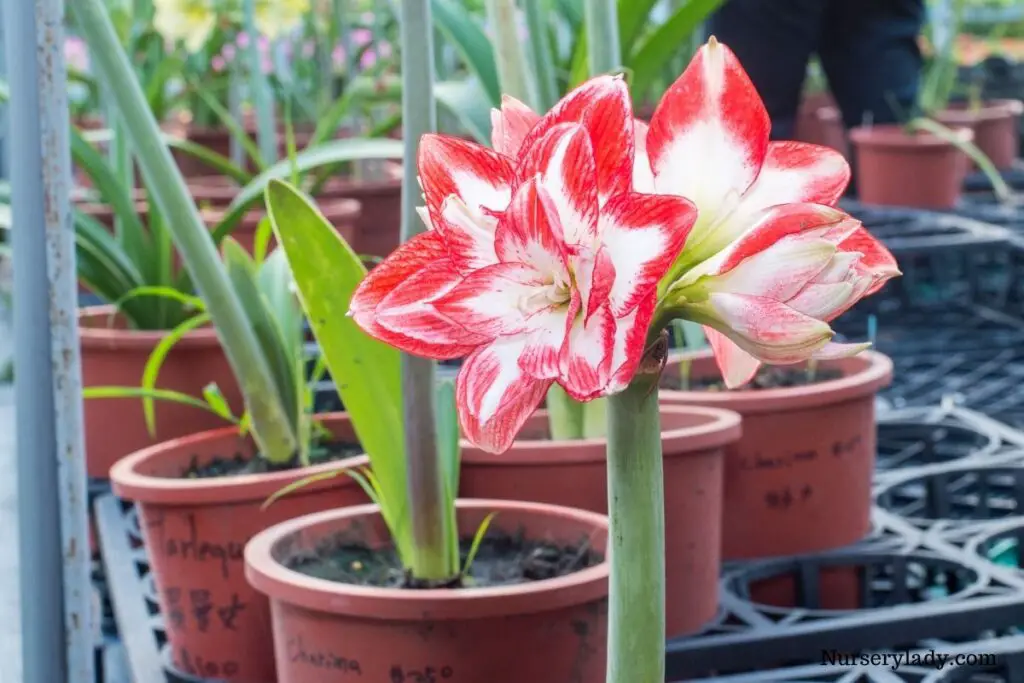
Amaryllis produces huge flowers in multiple colors and has strappy leaves.
They are easy to grow, and they will add beauty to your home with their stunning blooms. They can grow up to 2 feet tall and 12 inches wide.
Light: Amaryllis grows best in full sun to partial shade. Indoors keep them in a spot where they receive morning sun and shade during the hot afternoon sun.
Watering: Amaryllis should be watered when the top few inches of the soil are dry. Also, give them rest from watering after flowering to reset bulbs.
Fertilizer: Fertilize amaryllis with a liquid fertilizer every 2-3 weeks in the growing period. Do not feed after flowering to induce dormancy.
General care: Amaryllis thrives in warm temperatures. Trim the withered flowers and sagged stems after flowering.
Bromeliad
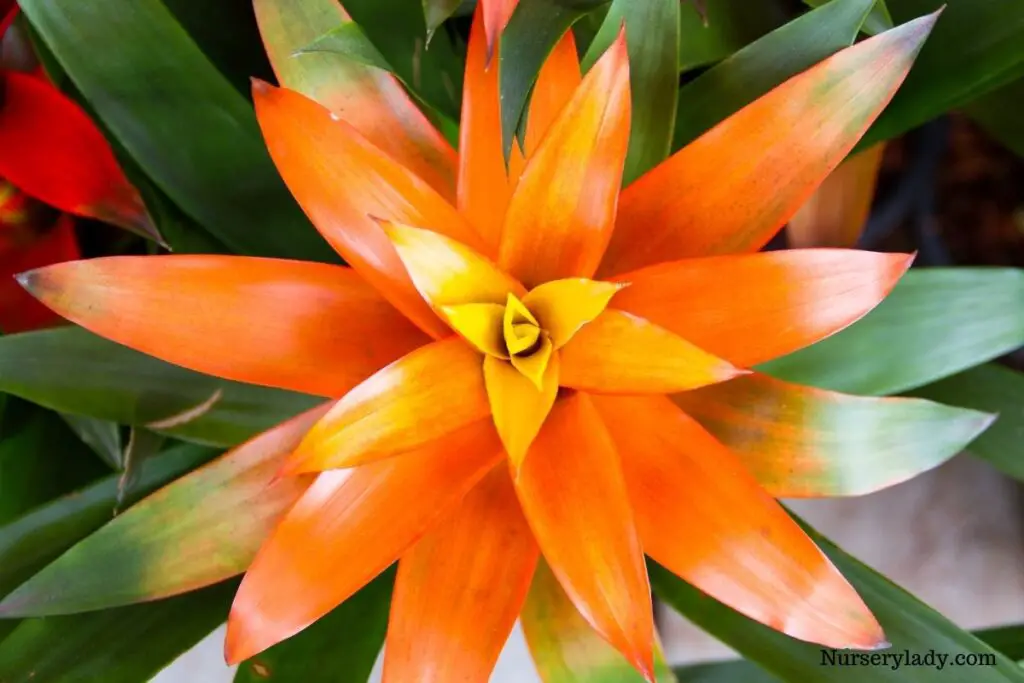
Bromeliad produces beautiful blooms in multiple colors and textures. They also display beautiful foliage in red, orange, purple, green, and yellow colors.
They are slow-growing plants that may take up to 3 years to flower, and they are an amazing choice for growing indoor plants.
Light: Bromeliads can grow in all types of lighting. Also, lighting depends on the variety. Some prefer low light and others bright light.
Watering: Bromeliads prefer evenly moist soil but not soggy conditions. They need water when the top 2 inches of the soil is dry to touch but not completely dry. Mist them if grown as epiphytes.
Fertilizer: Bromeliads are light feeders, and they will be happier with balanced fertilizer feeding. Feed only in the growing season and stop when the plant starts flowering.
General care: Bromeliads thrive in temperatures between 55°F to 80°F. Some of the varieties are cold-hardy, and others cannot tolerate temperatures below 40°F.
Lipstick plant
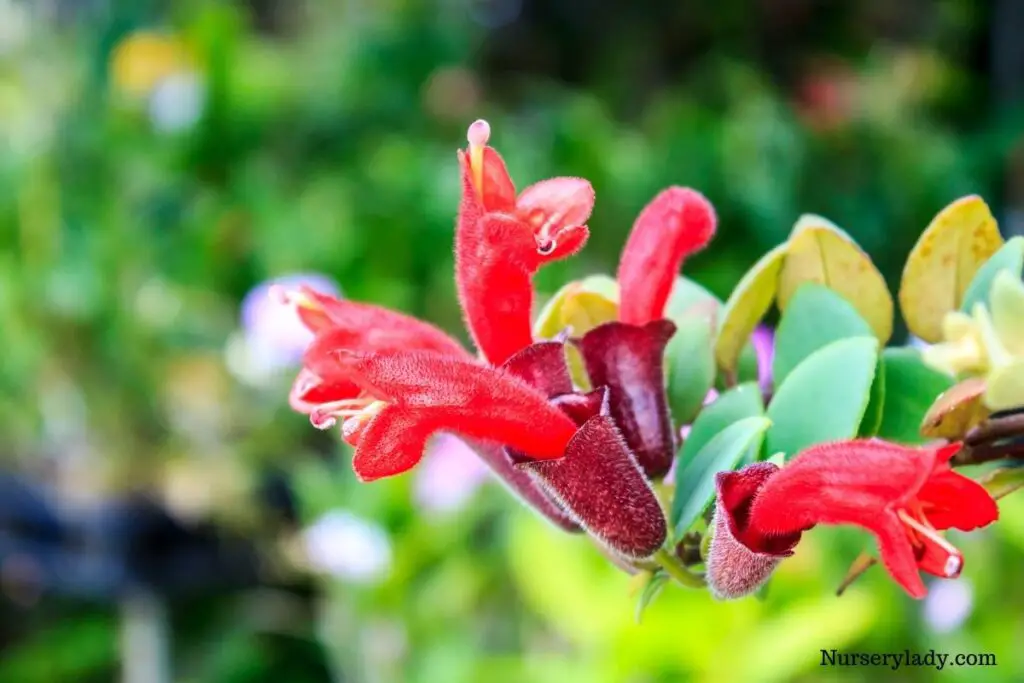
Lipstick plants produce vibrant red flowers in clusters along with green leaves.
They are ideal choices for indoor planting. They will offer blooms throughout the year.
Light: Lipstick plants prefer bright indirect light. Direct light causes scorching and low light will inhibit flowering. Please keep them in a sunny spot but not direct sun.
Watering: Lipstick plants grow best in moist soil. Too much watering results in root rot and fungal issues. Water moderately and let the soil dry between waterings.
Fertilizer: Feed lipstick plants with a balanced fertilizer or slow-release fertilizer throughout the growing season. Avoid feeding in dormant months.
General care: Lipstick plants grow best in temperatures between 65°F and 75°F. They prefer high humidity and suffer in temperatures below 50°F.
Flowering maple
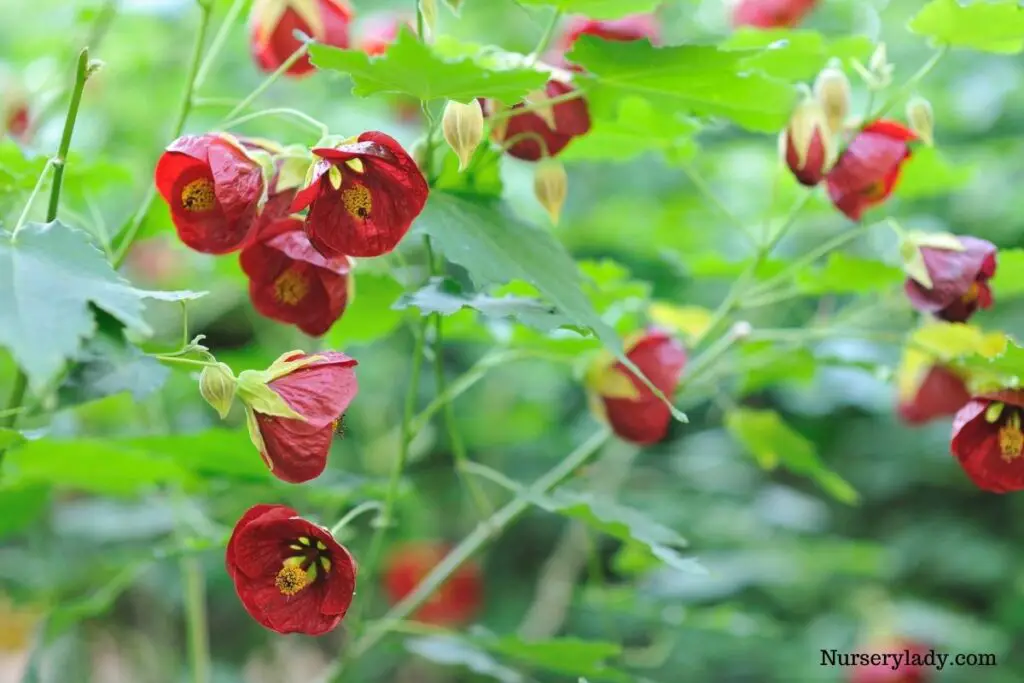
Flowering maples produce elegant flowers and solid green leaves, and they are easy to grow and maintain.
Depending on the variety, they are grown indoors for their different leaves and flowers.
Light: Flowering maple likes direct sun along with indirect light. An east-facing window is perfect for their growth and development. Intense sun can be damaging, so you must use shade.
Watering: Water flowering maple when the soil is dry to touch. Water thoroughly until excess water comes out from holes. Reduce watering in winter and water only when the soil is dry.
Fertilizer: Feed flowering maple with a diluted liquid fertilizer throughout the growing period. Avoid feeding in the dormant months.
General care: Flowering maple likes warm to cool temperatures. They appreciate humidity with good airflow. Pruning is essential for better growth and prolonged blooming.
Crown of thorns
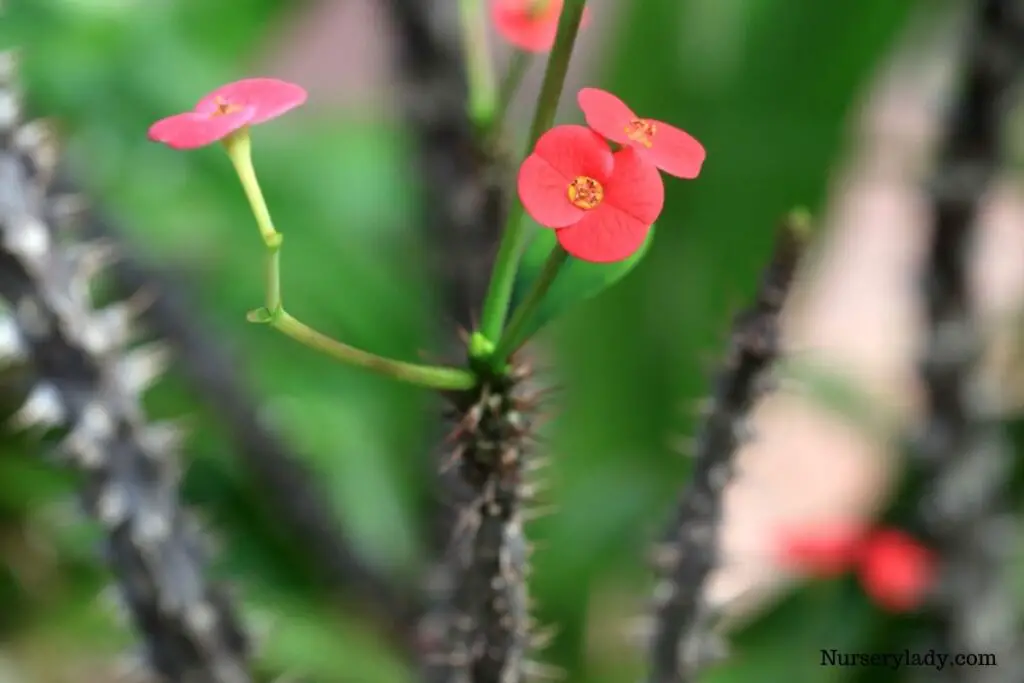
Crown of thorns is a beautiful succulent blooming all year long. They have thick green foliage and small flowers with showy bracts in multiple colors.
They are ideal houseplants. They are slow-growing, and they can reach up to 2 feet in height indoors.
Light: Crown of thorns appreciate good lighting and bloom best in full sun exposure. They can grow well if kept in bright direct sunlight for at least 4 hours each day.
Watering: Water crown of thorns only when the soil is dry. Being succulent, they are very forgiving about water. They do not appreciate soggy conditions as it will lead to root rot.
Fertilizer: Feed crown of thorns in their growing season with a balanced fertilizer. Dilute the fertilizer to half the strength to avoid overfeeding.
General care: Crown of thorns prefer a temperature between 65°F and 75°F. They can withstand temperatures down to 50°F.
Fire lily
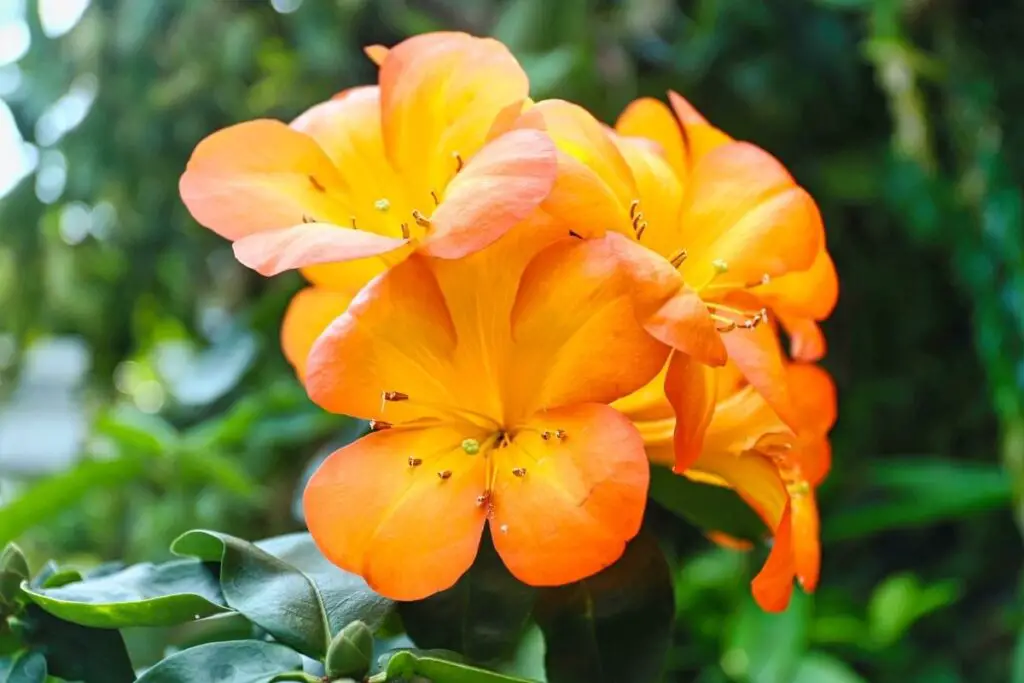
Fire lilies produce large clusters of flowers. They bloom after winter when all winter blooms have faded.
With their exotic look, they will become your favorite houseplant. They are slow-growing and easy to care for plants.
Light: Fire lilies prefer partial shade, making them ideal as houseplants. Find a sunny location indoors for the best growth and blooms.
Watering: Water fire lily when the soil is dry and ensure proper drainage. Reduce watering as the dormancy period starts to let the soil fully dry or almost bone dry between waterings.
Fertilizer: Feed fire lily with a slow-release fertilizer. Use balanced fertilizer from January till August and flower fertilizer in September and October. Avoid feeding them in winter.
General care: Fire lilies prefer room temperatures and low humidity. Cold months enhance their flowering. Please keep them in temperature between 40°F and 60°F during the dormant period.
Gloxinia
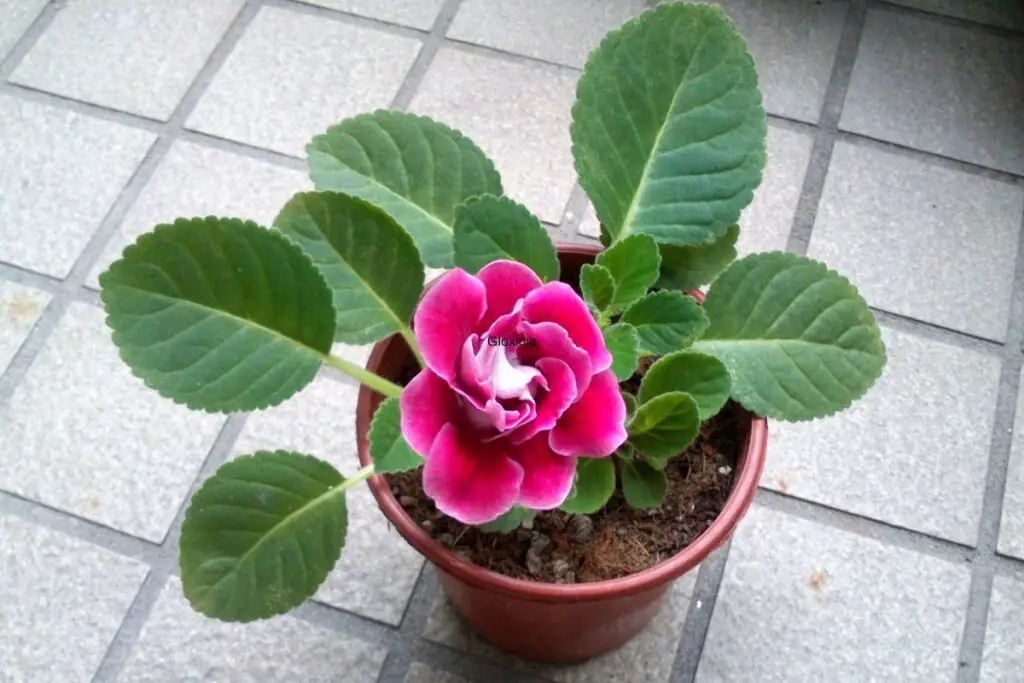
Gloxinia features bell-shaped blooms in bright colors and large velvety leaves.
They are easy to care for and are fast-growing, and they are a great choice for enhancing your indoor space. Their mature size is from 6-10 inches tall and wide.
Light: Gloxinia prefers bright indirect light, and they should not be exposed to direct light, which again makes them perfect as houseplants.
Watering: Keep gloxinia well watered for evenly moist soil but not soggy. Let the soil dry between waterings. Avoid overhead watering as it can result in brown spots.
Fertilizer: Feed gloxinia with liquid fertilizer by diluting it to half the recommended strength. Reduce or skip feeding in the dormant months.
General care: Gloxinia prefers temperature levels between 70°F and 78°F. They do not like dry, hot weather. Raise humidity around them using a humidifier. Avoid misting as it can lead to leaf spots.
Reference: The University of Minnesota, Kansas State University, BBC Wildlife Magazine, Arizona-Sonora Desert Museum.
